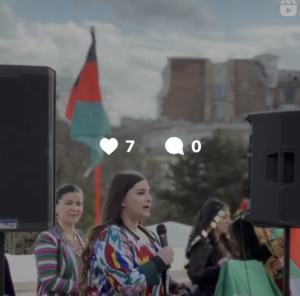The Iranian New Year carries significant symbolic value because the clerical regime confiscated this pre-Islamic festival. Indeed, despite the harsh attacks and fatwas from the mullahs against the Fire Festival, Iranians continue to gather on every occasion to celebrate around the sacred flames. This symbol has been adopted by the “Woman, Life, Freedom” movement as a protest against the death of Mahsa Amini. Young people burn their scarves in the fire while others dance around it. Fire is the quintessential purifying element in Persian philosophy. Iranian women have transformed this symbolic tradition into a political act. Women have cut their hair, men have shaved their heads, and all have posted videos of these acts on social media. This is how this highly symbolic gesture has spread to all corners of the world.

Norouz (meaning “the new day”) is the greatest national Iranian celebration. Celebrated for thousands of years, it originates from ancient Persia and symbolizes rebirth, light, and the victory of spring over darkness. It marks the arrival of beautiful days and the awakening of nature. It is celebrated on March 14 (the Fire Festival) and culminates on the day of the spring equinox, March 21, which is considered the first day of the new year.
On the occasion of Norouz, Iranian women and men gather to celebrate the New Year around the sacred flames. This symbol has been adopted by the “Woman, Life, Freedom” movement as a protest against the death of Mahsa Amini. Iranian women have transformed this symbolic tradition into a political act by burning their veils in the fire and dancing around it. This is why this year Norouz carries an even more symbolic meaning and is celebrated in honor of Iranian women who cherish freedom.
The Norouz festival is celebrated in countries that were influenced by the Persian Empire, where the sun and fire were sources of worship: Iran, Afghanistan, parts of the Middle East, as well as the former Soviet republics of Tajikistan, Uzbekistan, Azerbaijan, Kazakhstan, and Kyrgyzstan, Kurdistan (some regions of Iraq), and the Zoroastrian Parsis in India. The cultural heritage of Norouz was inscribed in 2009 on UNESCO’s and the UN’s Intangible Cultural Heritage of Humanity list as an international festival born from a millennia-old cultural legacy. More than 300 million people worldwide celebrate Norouz as the beginning of the new year.
“This year, we dedicate this gathering to the ‘Woman, Life, Freedom’ movement, to all the women of Iran and Afghanistan who fight every day against a tyrannical, dictatorial, theocratic, and above all misogynistic government,” explains Nazila Golestan, spokesperson for the Hamava association (National Coalition for a Free and Democratic Iran), wearing a long traditional Persian coat embroidered with golden threads.

